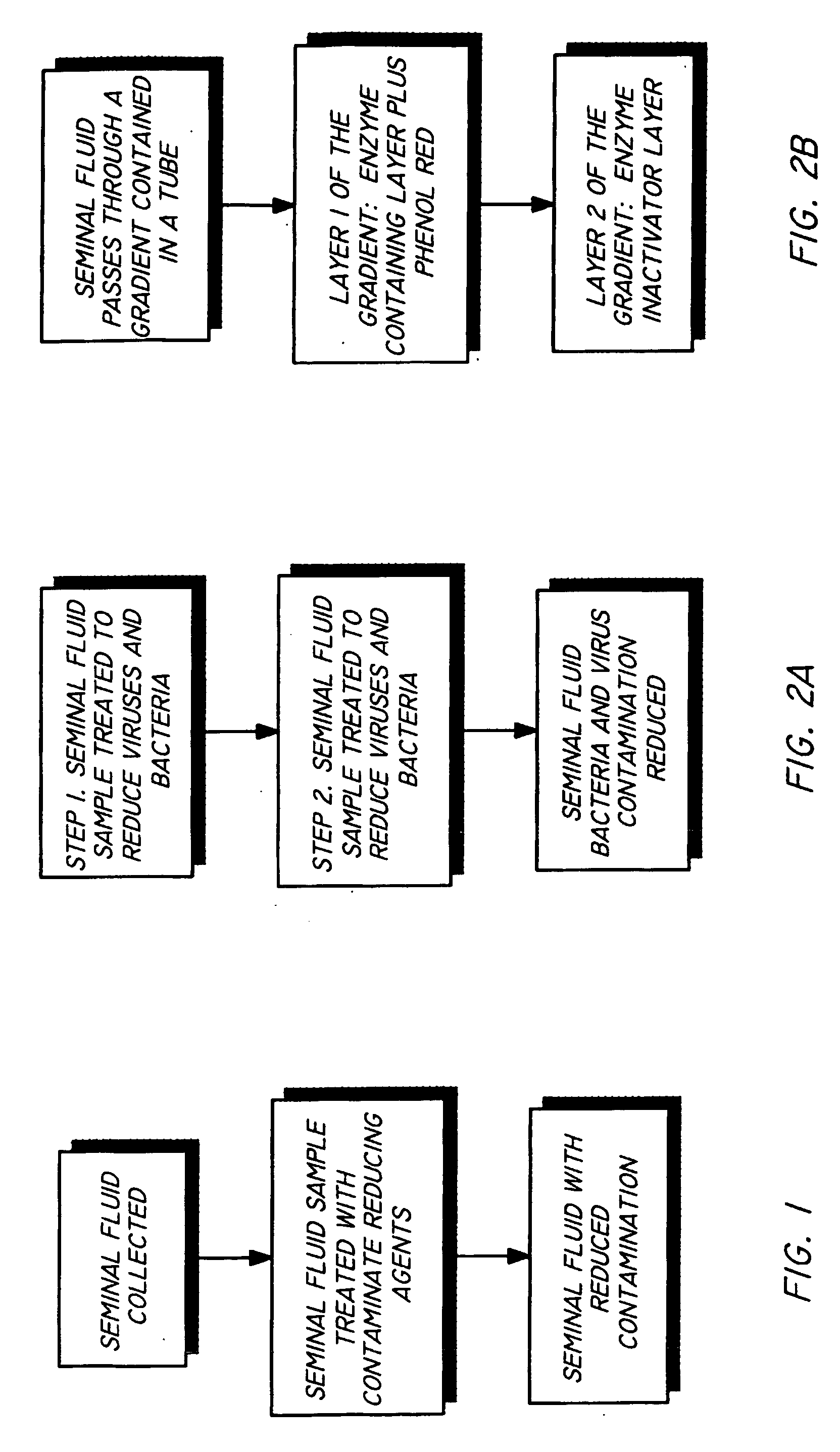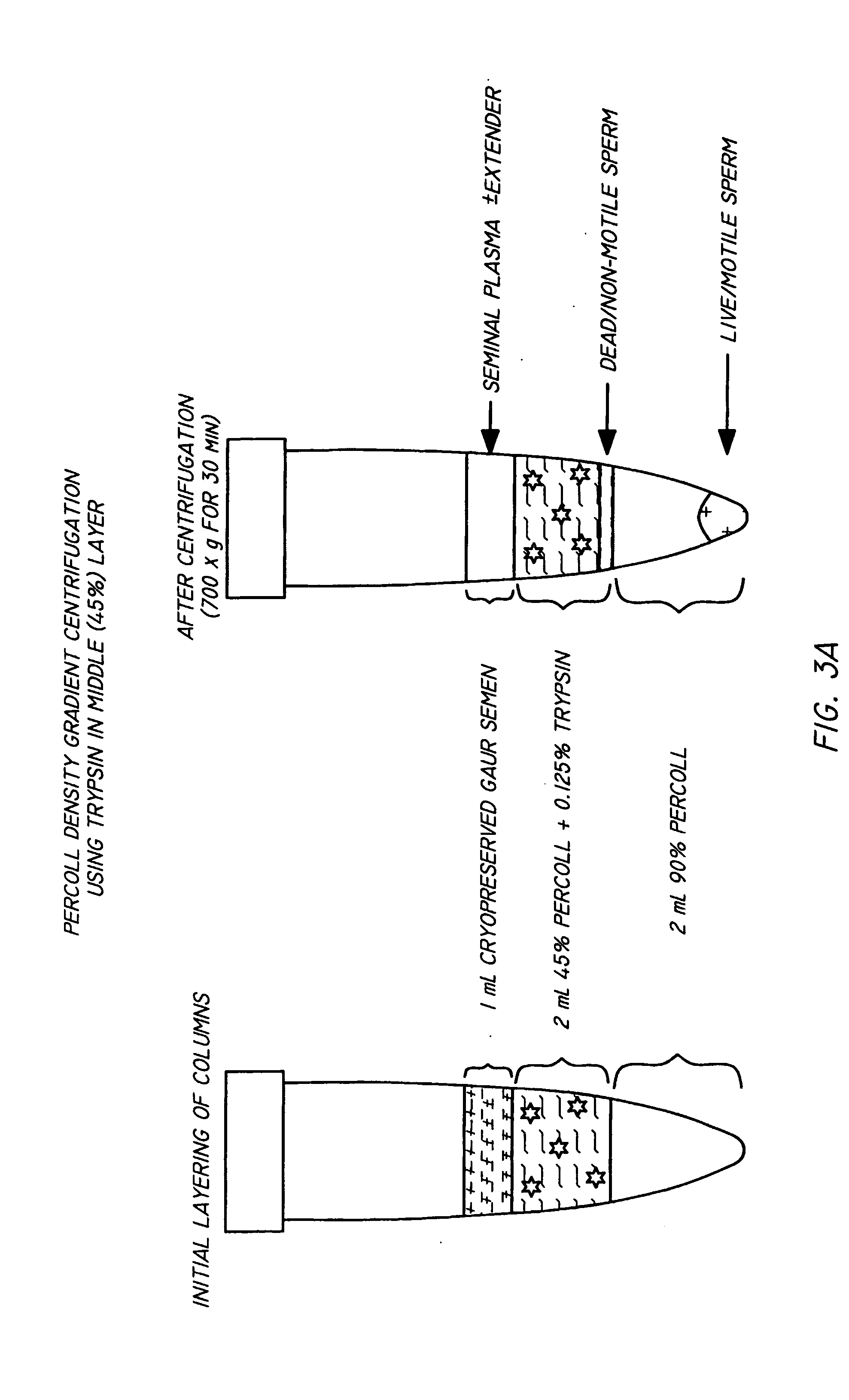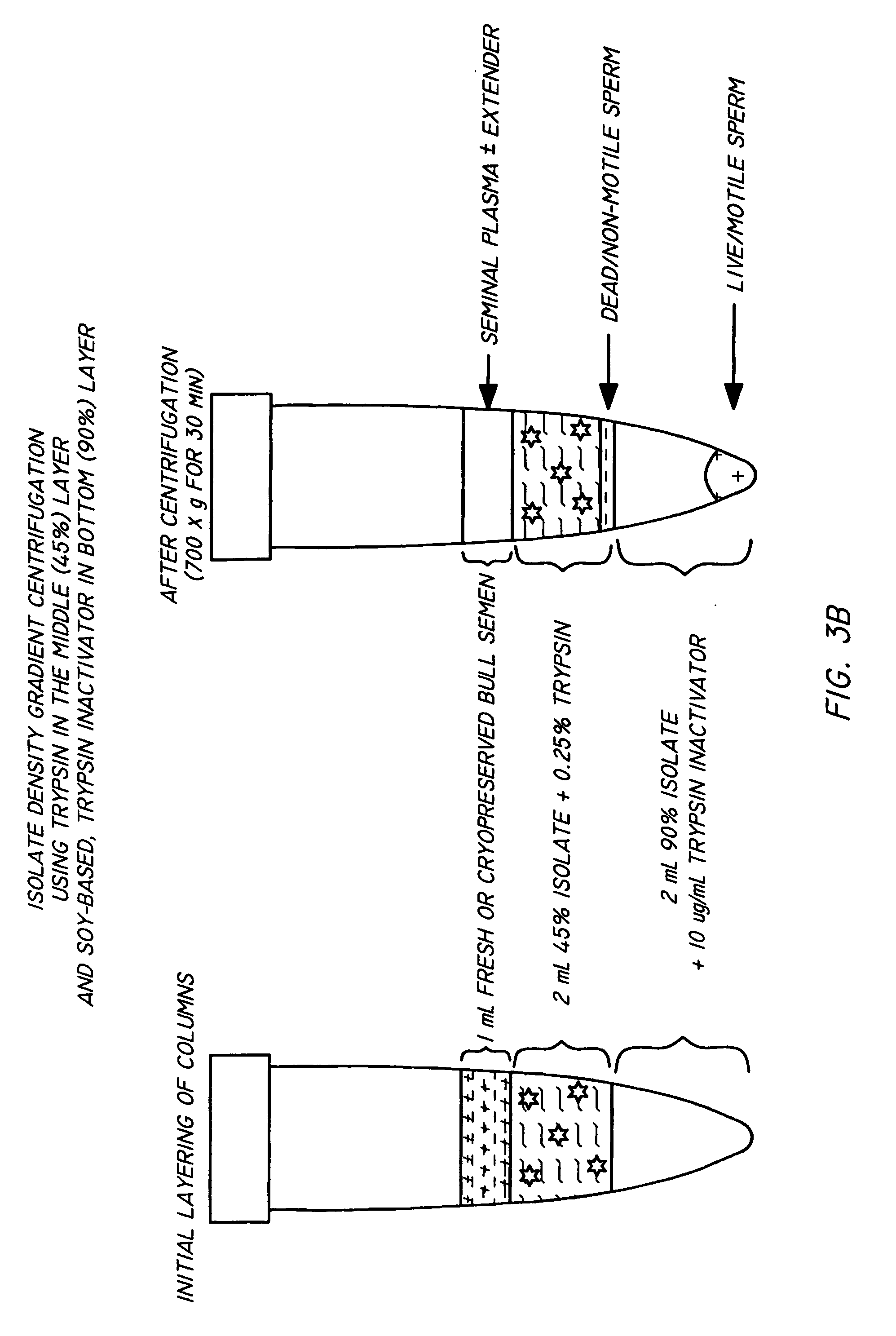Method and apparatus for reducing pathogens in a biological sample
a technology of biological samples and apparatus, applied in the direction of organic chemistry, disinfection, drug compositions, etc., can solve the problems of insufficiently testing and concluding test of decontaminating sperm by adding trypsin directly to the semen
- Summary
- Abstract
- Description
- Claims
- Application Information
AI Technical Summary
Benefits of technology
Problems solved by technology
Method used
Image
Examples
examples
1. This is an actual example taken from a recent boar collection by Dr. Brett White, University of Nebraska at Lincoln).
Raw Concentration:287 × 106 / mlRaw Volume:500 mlNumber of Sperm in Entire Sample:143.68 billion
Number ofCost PerBillion of Sperm / AIAI Doses*AI Dose528.74$1.26435.92$1.01347.89$.76271.84$.501143.68$.25
2. This is an example based on an average collection at Sygen Intl. (information provided by Jeff Altfillisch)
Raw Concentration:300 × 106Raw Volume:250Number of Sperm in Entire Sample:75 billion
Number ofCost PerBillion of Sperm / AIAI Doses*AI Dose515$2.42418.75$1.93325$1.45237.5$.97175$.48
*AI doses using raw (non-treated) ejaculates typically range from 3-5 billion sperm dose without adjusting for the percentages of live or motile sperm. The concentrated sperm treated with the semen disinfection procedure will be close to 100% motile (as only motile sperm can pass through the density gradients). It is, therefore, highly probable that the total numbers of sperm use...
PUM
| Property | Measurement | Unit |
|---|---|---|
| concentration | aaaaa | aaaaa |
| concentration | aaaaa | aaaaa |
| diameter | aaaaa | aaaaa |
Abstract
Description
Claims
Application Information
 Login to View More
Login to View More - R&D
- Intellectual Property
- Life Sciences
- Materials
- Tech Scout
- Unparalleled Data Quality
- Higher Quality Content
- 60% Fewer Hallucinations
Browse by: Latest US Patents, China's latest patents, Technical Efficacy Thesaurus, Application Domain, Technology Topic, Popular Technical Reports.
© 2025 PatSnap. All rights reserved.Legal|Privacy policy|Modern Slavery Act Transparency Statement|Sitemap|About US| Contact US: help@patsnap.com



